Most (or every) SaaS founders know that navigating the industry takes more than just hard work.
It takes insight.
I’m a big fan of MFM Podcast and both Sam and Shaan.
If you dont have any clue what I’m talking about, a very fast brief:
MFM is a business idea podcast with two awesome, funny and smart hosts Sam Parr and Shaan Puri. They both sold their companies and now do this podcast and other project.
One of them being The Hamptons by Sam Parr and where they craft amazing industry reports and insights. I already wrote about their AI & business report a couple of months ago.
So The Hamptons just released a new report about Saas companies and market. (see the link to the report at the bottom of the post).
Here’s the recap.
The Hampton 2024 State of SaaS report
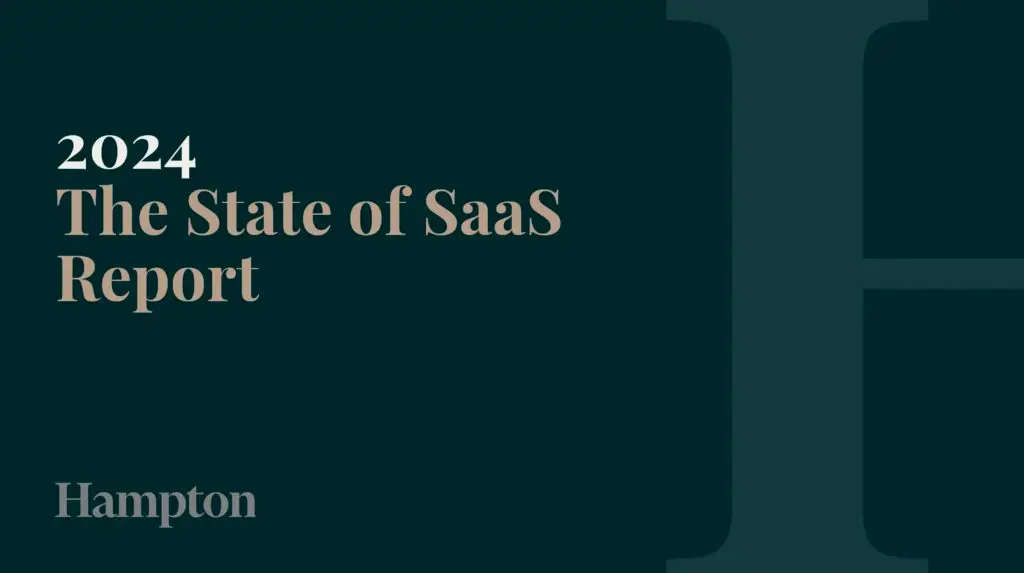
The Hampton 2024 State of SaaS report breaks down actionable trends and strategies used by top companies today.
This is your cheat sheet for growth, profitability, and staying ahead of the curve. Let’s get into the key findings and what they mean for your business.
The Battle for $1M ARR: VC vs. Bootstrapped
In the race to reach $1M ARR (Annual Recurring Revenue), VC-backed companies tend to sprint, hitting the mark in 2.8 years compared to 4.2 years for bootstrapped startups.
But VC-backed growth comes at a cost.
And thats profit margins.
VC-backed firms show lower gross profit margins, while bootstrapped companies tend to be more cautious, sacrificing speed for profitability.
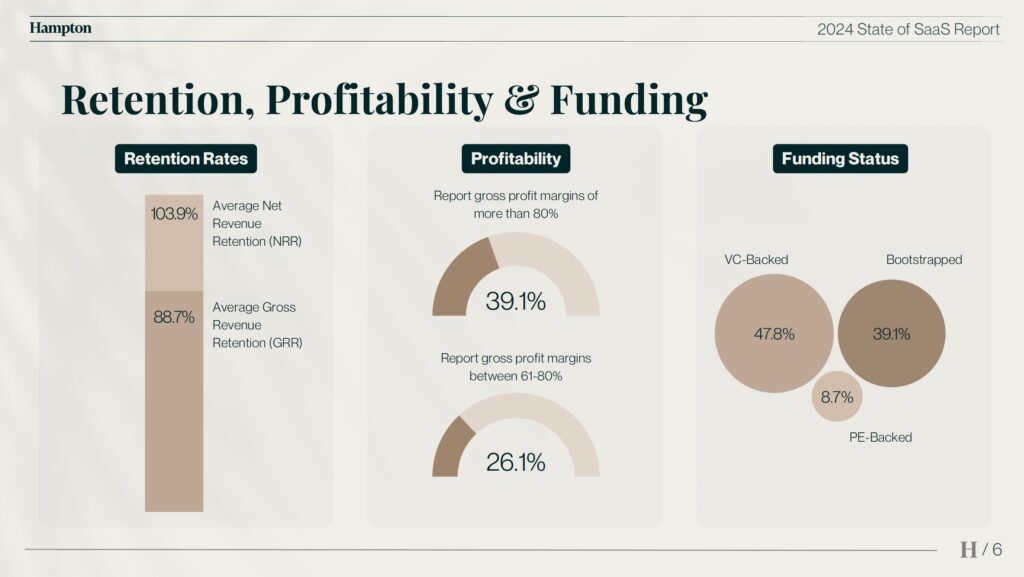
So, if you’re bootstrapping, don’t sweat the slower pace. You might be losing the sprint, but you’re set to win the marathon with more cash in the bank.
Retention = Revenue. Big Time.
The report highlights one massive truth: Retention is everything.
Companies with Net Revenue Retention (NRR) above 110% are three times more likely to report gross profit margins of over 80%.
Why?
Because keeping customers is far cheaper—and more profitable—than acquiring new ones.
If your NRR isn’t there yet, it’s time to rethink your customer success and product strategies.
The LTVConundrum
How much does it cost to acquire a customer, and what are they worth in the long run?
The report breaks down the LTVratio and offers interesting insight.
While the average LTV is $87,005, the median is just $28,000.
Translation: the top-performing SaaS companies are dramatically outperforming the rest.
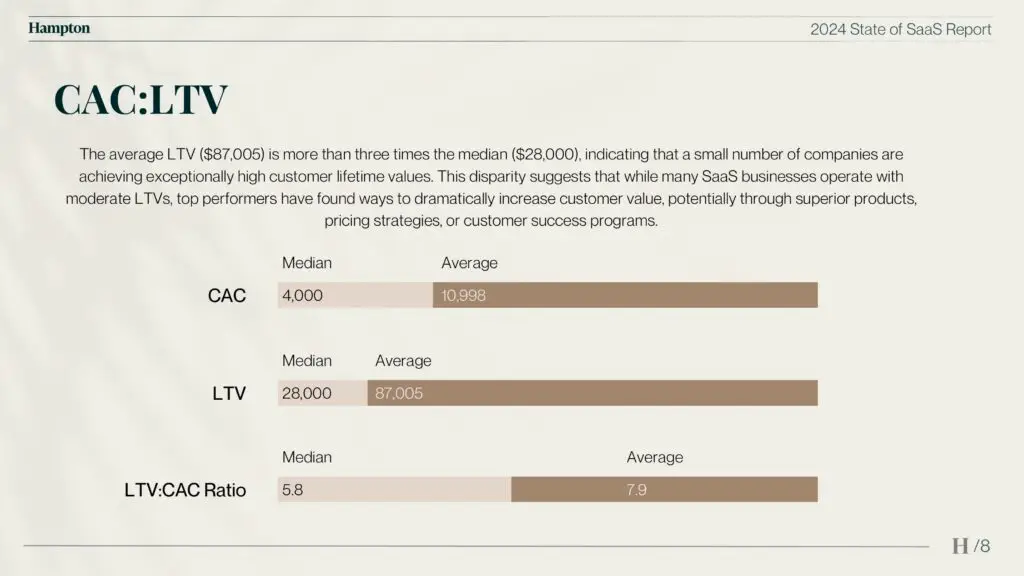
A few companies are raking in big returns while the majority hover around average.
R&D Investments: A Double-Edged Sword
You might think more employees = more revenue per head, but thats not always the case.
Smaller teams (1-10 employees) pull in a median revenue per employee of $300,000, while larger teams (51-200 employees) drop to $230,000.
That said, the big guys still win because they pump 30% of their revenue back into R&D, giving them a long-term advantage through innovation.
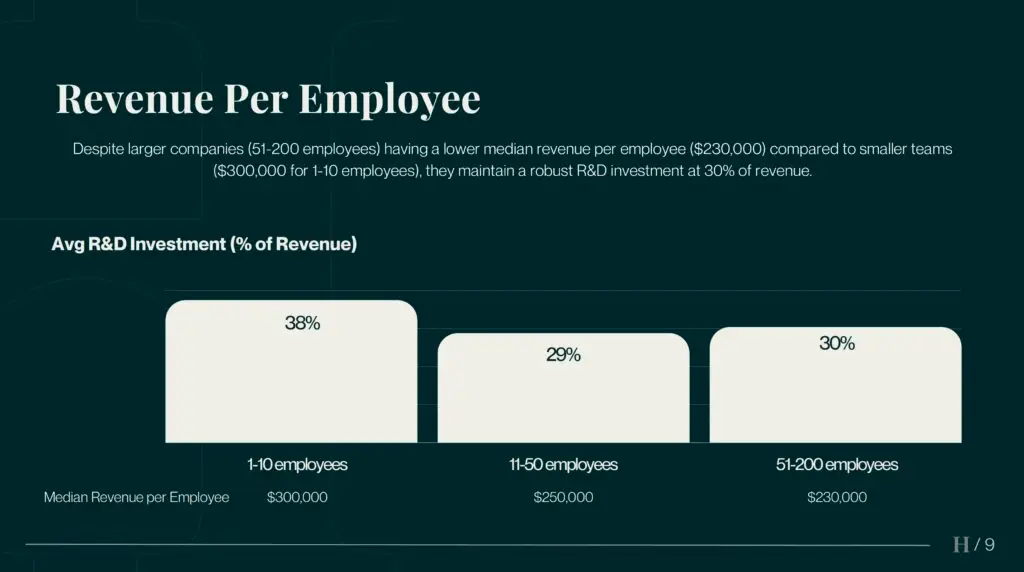
If you’re smaller, you’re scrappier—but if you can scale and maintain aggressive R&D, you’ll eventually outpace the competition.
SaaS Success in 2024: The Challenges Ahead
What’s keeping SaaS leaders up at night?
A big chunk—39%—are struggling with scaling operations.
As you grow, complexity becomes the enemy.
Others are wrestling with talent retention, customer acquisition, and adapting to ever-changing market dynamics.
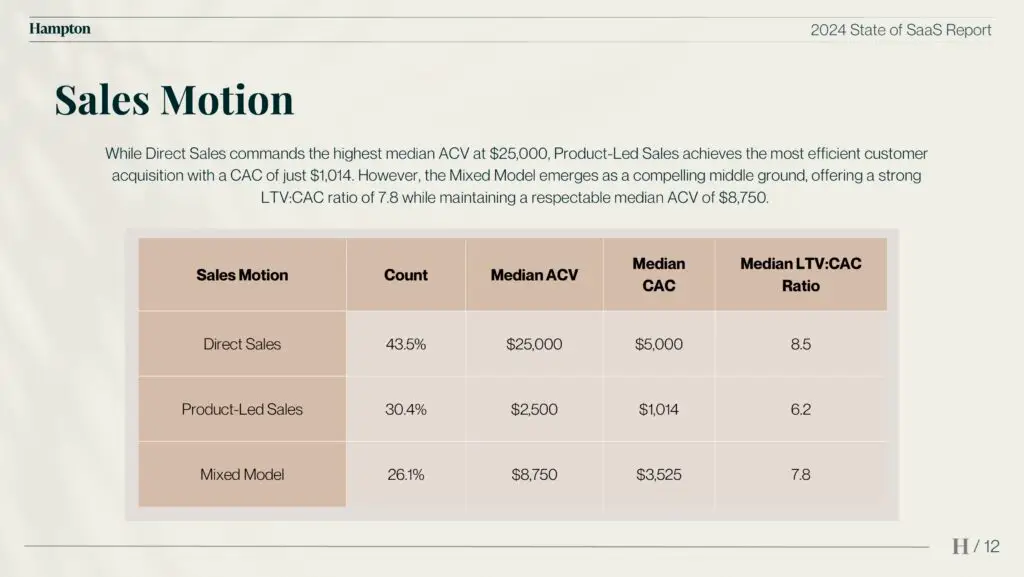
What’s the solution?
The report suggests to focus on product-led growth, automation, and expanding into new markets. The SaaS companies that lean into AI and machine learning are seeing the biggest payoffs.
Link to the report
You can find the whole report on Hampton website.
